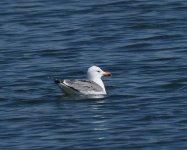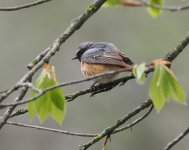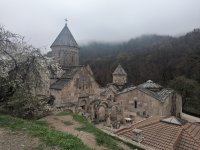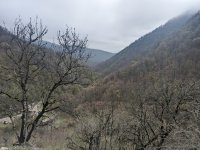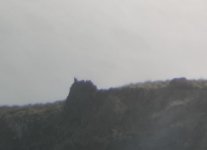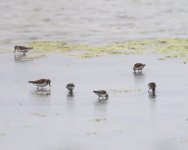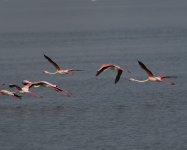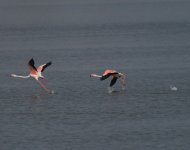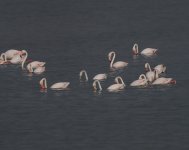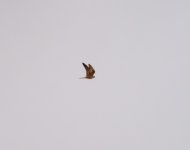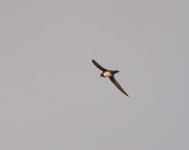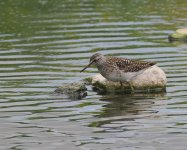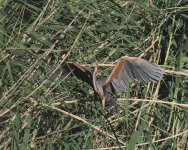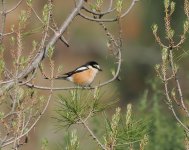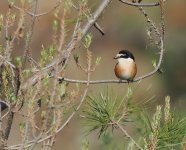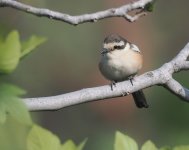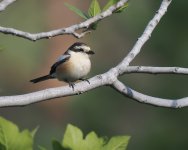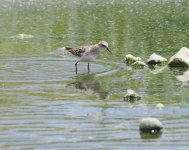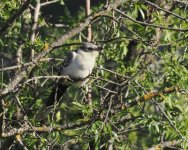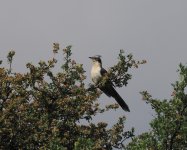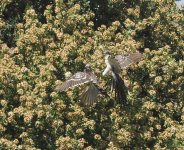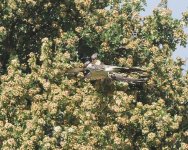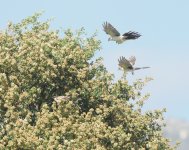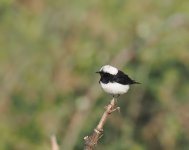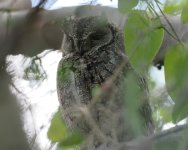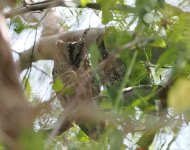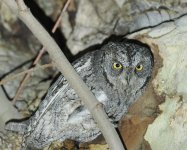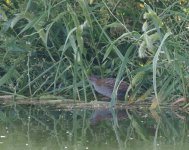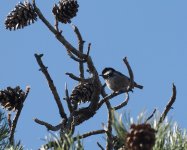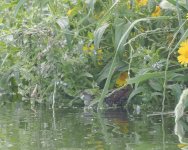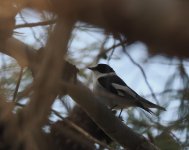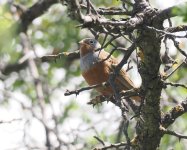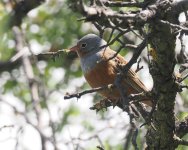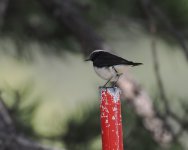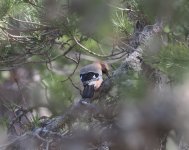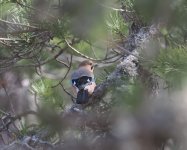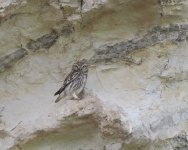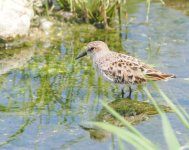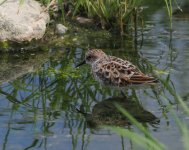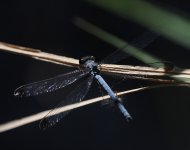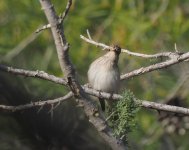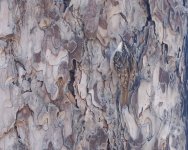
My final day in Armenia began rather cool and misty but things were beginning to clear. After breakfast, I headed a few miles to the road that runs up from east of Dilijan to Haghartsin Monastery. This is one of the finest wooded areas in Armenia, and I was soon enjoying the birding. A Hawfinch flew up from the road before I'd even parked, and this species was quite conspicuous throughout the morning. The birds had a surprisingly western European feel, with species such as Robin, Song Thrush, Wren, Dunnock, Blue Tit, Mistle Thrush, Long-tailed Tit, Eurasian Nuthatch and Bullfinch all around. I was hoping for some less familiar birds though. I found one of the specialities fairly soon, although it was hard work to get good views. A group of at least three Green Warblers were foraging in the budding beech trees on the lower part of the road. I watched them for some time, although they were mostly only viewable from underneath. They weren't singing or calling at all, but perhaps had been feeding lower down during the cold weather. Another target took a bit longer but I eventually had some decent views of three male Semi-collared Flycatchers, two of them higher up the road and then one back down near the bottom. I also enjoyed flight views of a pair of noisy Black Woodpeckers in a beautiful setting.
Time was pretty much up by early afternoon. I stopped for a short time by Lake Sevan at Sevanavank Monastery. Not too much was here but I did get some close views of Armenian Gulls. Then I drove back to the airport, negotiating the traffic in Yerevan and getting the car washed. By late evening I was back on a flight to Larnaca. Armenia was quite excellent. I recorded 181 species amidst some beautiful landscapes and, although I didn't see any lifers, I really enjoyed the spectacular birding in many places, the pleasure of seeing a lot of birds I've not seen since the 90s, and the thrill of the unknown.
Time was pretty much up by early afternoon. I stopped for a short time by Lake Sevan at Sevanavank Monastery. Not too much was here but I did get some close views of Armenian Gulls. Then I drove back to the airport, negotiating the traffic in Yerevan and getting the car washed. By late evening I was back on a flight to Larnaca. Armenia was quite excellent. I recorded 181 species amidst some beautiful landscapes and, although I didn't see any lifers, I really enjoyed the spectacular birding in many places, the pleasure of seeing a lot of birds I've not seen since the 90s, and the thrill of the unknown.




